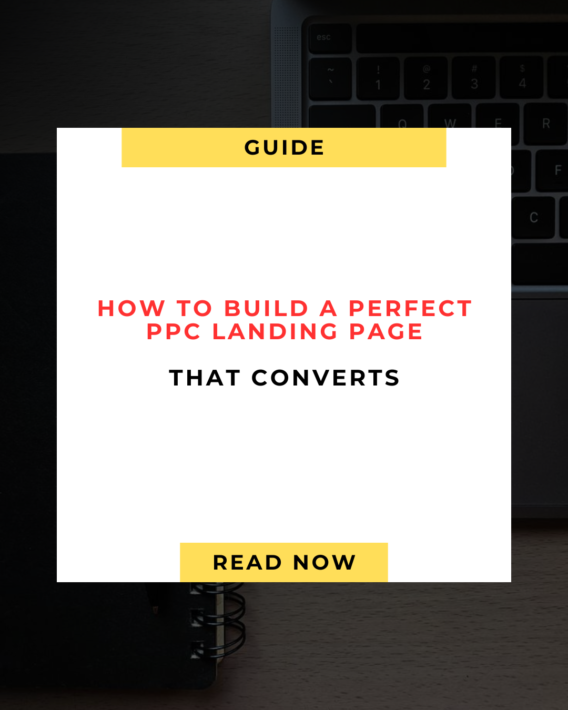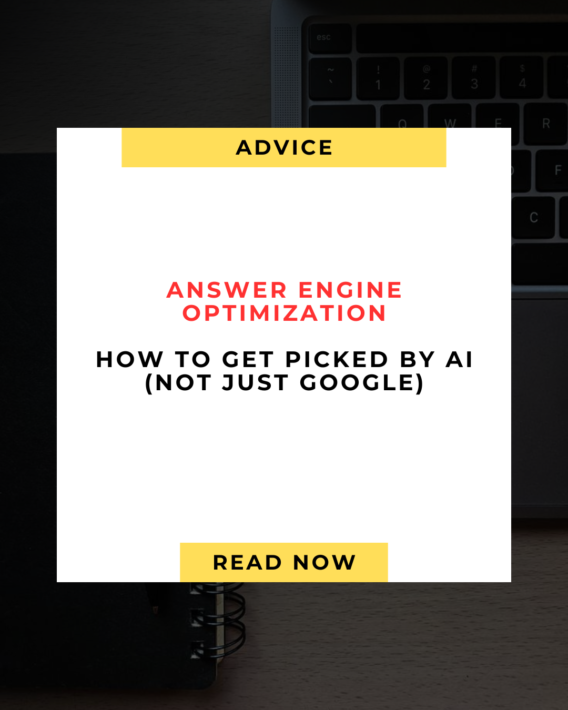
It’s crucial for every advertiser to utilize the right tools and strategies to enhance their online visibility. One powerful tool is Google’s Remarketing Lists for Search Ads (RLSA). This feature enables you to tailor your Search ad campaigns specifically for users who have already visited your website. In this blog post, I’ll cover the essential details you need to understand about RLSA.
What Are Remarketing Lists in Google Ads?
Remarketing Lists for Search Ads (RLSA) is a feature in Google Ads that lets you tailor your search ad campaigns for users who have previously engaged with your website or app. This allows you to target these potential customers more effectively by customizing your ads based on their past interactions.

Remarketing-lists-for-search-ads
With RLSA, you have the flexibility to adjust your bids, craft tailored ads, or expand your keyword selection to better connect with your most valuable prospects when they’re searching on Google.
How Does RLSA Work?
RLSA operates by using cookies to track users who visit your website. When these users leave your site and continue browsing on Google, your ads are more likely to appear in their search results, keeping you connected with your audience even after they’ve left your site.
Here’s a detailed breakdown of how it works:
- Creating RLSA Audiences: To start, you add a snippet of code, known as a tag, to your website. This tag automatically categorizes your visitors into specific lists based on the actions they take on your site.
- Bidding on Audience Segments: Once the tags are in place, you can bid on these audience segments and integrate them into your marketing campaigns. When these users later search on Google or browse sites within the Google Display Network using relevant keywords, they may see customized ads tailored to their previous interactions on your site.
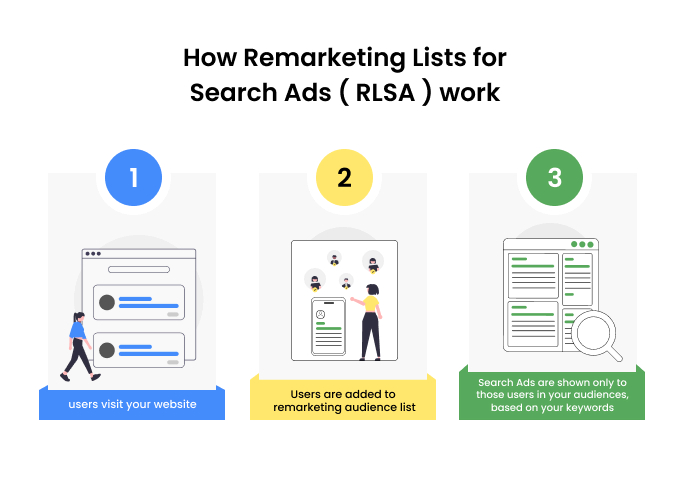
Benefits of RLSA Campaigns
Remarketing Lists for Search Ads (RLSA) in Google Ads provide several advantages for advertisers looking to re-engage past website visitors within the search network. Here are the top six benefits:
- Personalized Ad Content
RLSA enables advertisers to create highly targeted ads specifically for prospects who have already interacted with their website. You can tailor your ads based on the products or services users viewed, making your ads more relevant and increasing the chances of capturing their attention. For instance, if a user showed interest in a particular product, you can remind them that it’s still available for purchase. - Increased Bid Control
RLSA campaigns allow advertisers to adjust bids for specific audience segments. This control lets you allocate more budget to audiences with higher conversion potential, optimizing your ad spend. For example, you can increase your bid by 25% for users who visited your site in the last 30 days or show a different ad to those who added items to their cart but didn’t complete the purchase. - Enhanced Targeting Precision
With RLSA, advertisers can target specific audience segments based on their past behaviors, such as pages visited or actions taken on your website. This precision helps you reach users who are more likely to convert, delivering more relevant and targeted ads. Improved ad relevance can positively impact your quality score, leading to better ad placements and lower costs per click. - Focus on High-Value Audiences
Through bid adjustments and precise targeting, RLSA allows advertisers to prioritize high-value audience segments, increasing the likelihood of conversions. Focusing on these engaged audiences can maximize the return on investment (ROI) for your advertising campaigns. - Cross-Device Targeting
RLSA extends across devices, enabling advertisers to reconnect with users who visited their website on one device and continue engaging on another. This cross-device targeting ensures that you reach users wherever they are in their purchase journey, helping to maximize your ROI. - Basic Google RLSA Requirements
- Availability: RLSAs are available for users searching through Google or partner sites.
- Minimum Cookies: A list requires at least 1,000 cookies before you can use this feature.
- Membership Limit: Lists can include users for up to 540 days.
- Data Source: You can use remarketing lists or customer match email address lists. Third-party data usage for RLSA is not allowed.
- Bid Adjustments: You can decrease bids by up to 90% or increase them by up to 900%. If a searcher is in two remarketing lists, Google will apply the higher bid.
How to Set Up RLSA for Your Google Ads Campaigns
RLSA setup in Google Ads requires a few key steps for proper execution. Here’s how you can get started:
Step 1: Create a New Audience Segment
- Sign in to your Google Ads account.
- Click on the wrench icon, then under Shared Library, select Audience Manager.

Click on the blue plus icon to create a new audience. Select “Website visitors” or another option based on where you installed the remarketing tag.
This will allow you to define the audience criteria, such as specific pages visited or actions taken on your website.
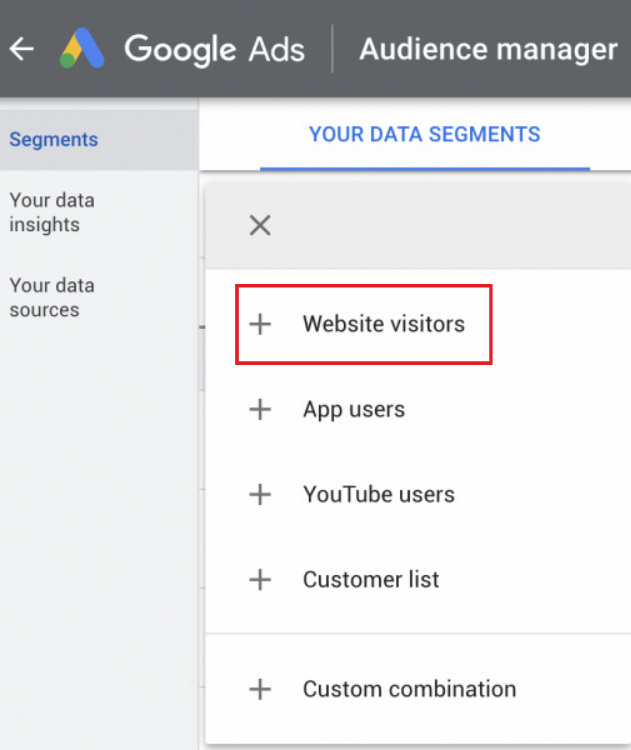
Enter the page URL that corresponds to the audience you want to target. Name your segment for easy identification in your campaigns.
This step helps you create a specific audience list based on the users’ interactions with certain pages of your website.

Step 2: Modify Your Audience Segment
After creating your audience, navigate to your Search campaign. Click on your ad group and select “Audiences” from the sidebar on the left. Then, click on “Edit Audience Segments.”
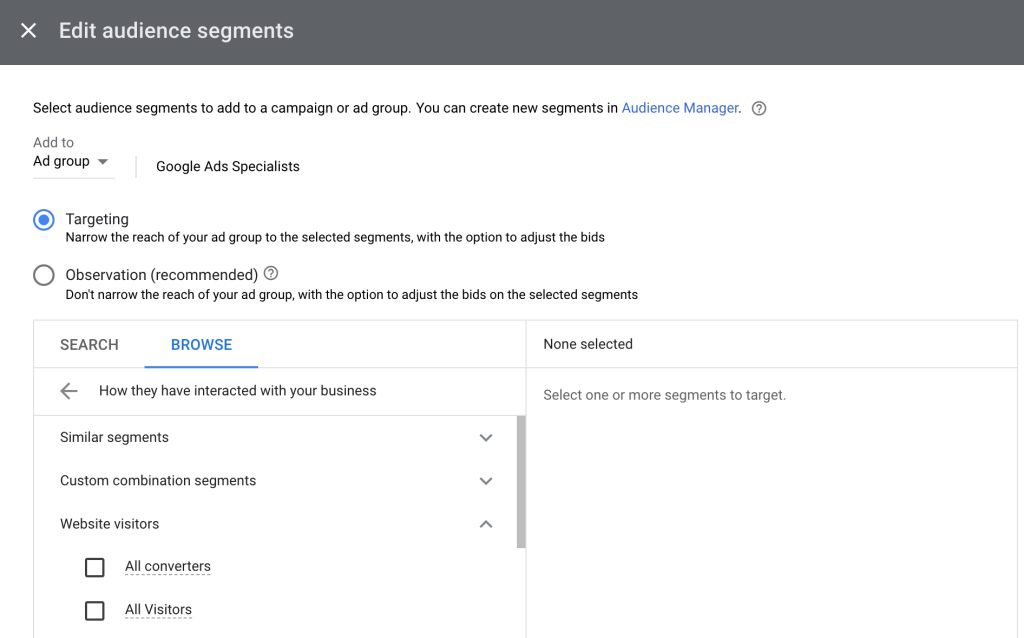
Choose Between Two Options: Targeting or Observation
- Targeting: This option ensures your ads are only shown to the audience segments you’ve predefined, based on the keywords you’re bidding on.
- Observation: This setting allows you to see data on your selected audience segments but still lets your ads appear to other users outside these segments who search using your keywords.
Step 3: Implement the Remarketing Tag on Your Site
Add the remarketing tag to every page of your website. This tag enables Google to identify and add each visitor to your remarketing list.
Step 4: Integrate the Remarketing List with Existing Campaigns and Ad Groups
After creating your remarketing list, attach it to an existing ad group or campaign targeting the Search Network.
The remarketing list consists of website visitors or app users collected through code snippets added to your site or app. Based on your objectives, create the necessary remarketing lists and set their duration.
If you encounter any issues, consider consulting a reliable digital marketing agency, such as MARMAK HUB.
Top Strategies to Optimize Remarketing Lists for Search Ads Campaigns
Optimizing your remarketing lists can greatly enhance your ad performance. Here are some strategies that could be highly effective for your business:
- Target Specific Audience Segments Understand your audience’s previous behavior on your site. Collect and analyze data to gain insights into their needs, preferences, and behaviors. For example, you might create segments based on:
- Homepage visitors
- Category page visitors
- Product or offer page visitors
- Cart abandoners
- Past converters
This segmentation helps tailor your ads to the specific interests and actions of each group, improving relevance and engagement.
Вased on segmentation, you can create personalized ads and target them to the appropriate audience. I’ll explain how to do this in more detail below.
Additionally, you might want to adjust your bids based on demographic data of your audience as an extra step. If users are logged into Google while searching, you can use available information like age and gender to refine and adjust your bids and lists.
Create Personalized Ads for Each Audience Segment
Users who are already familiar with a brand typically expect a highly customized experience. This can include personalized messages, offers, or interactions based on their preferences and previous actions. Tailoring your content and offers can strengthen the relationship between the audience and the brand, leading to higher conversion rates.
Design distinct ads for each segment that directly address their needs and interests. This could involve varying your messaging, images, or calls to action depending on the segment. The aim is to ensure each ad feels customized and relevant to the user.
For example, if a user visits a pricing page, you might show them an ad highlighting an upcoming discount.
Adjust Bids for Each Segment
If you have detailed customer journey maps, you likely know which customer behaviors are most critical for driving conversions — this is where RLSA shines. Use tracking codes on your site to monitor user progress and place higher bids for those nearing conversion, i.e., those close to making a purchase. For segments that perform poorly, consider lowering your bids or enhancing your ad copy and landing pages to improve performance.
Utilize Negative Keywords
Negative keywords help prevent your ads from appearing for certain words or phrases, improving campaign efficiency by ensuring your ads only show for relevant searches. To apply negative keywords, add them to your Google Ads campaign or ad group.
For instance, if a user clicks on your ad but quickly leaves your site, they’re unlikely to convert. Similarly, email subscribers or unqualified leads may not convert through your ads. To avoid unnecessary costs, exclude them or use negative bids.
Be cautious with negative keywords. Overusing them may reduce your ads’ reach.
Focus on Long-Tail Keywords for Highly Qualified Users
Long-tail keywords are specific phrases customers use when they are closer to purchasing. They are less competitive and cheaper to bid on. While some marketers advise against bidding on overly specific keywords, RLSA is designed to target your most qualified users who are more likely to buy. Therefore, don’t hesitate to bid on long-tail keywords that are relevant to your best prospects.
You can discover long-tail keywords by searching for terms related to your business on Google.com or by using a Keyword Planner tool to find new keywords with traffic.
If you choose this approach, make sure not to allocate your entire budget to these terms, as keywords directly related to your business remain crucial.
Monitor and Adjust Regularly
Regularly check the performance of your keywords. Use Google Ads performance reports to track metrics such as:
- Click-through rate (CTR)
- Conversion rate
- Cost per click (CPC)
- Return on ad spend (ROAS)
Based on these metrics, continuously optimize your keywords and adjust your bidding strategy as needed. This might involve adding new keywords, pausing underperforming ones, or modifying bids.
Collaborate with a Google Ads Agency
Managing and optimizing RLSA campaigns can be complex and time-consuming. By partnering with an agency, you can free up internal resources to focus on other areas of your business. Google Ads agencies have teams of experts with extensive experience in managing and optimizing RLSA campaigns, offering valuable industry insights that can enhance campaign performance.
Frequently Asked Questions
- What are the requirements for a remarketing list for Google search ads?
A remarketing list for Google search ads must contain at least 1,000 cookies before it can be used to tailor your search ads. This requirement helps protect the privacy of the individuals on the list. - Can I use RLSA for YouTube ads?
Yes, RLSA can be used for YouTube ads. However, implementing RLSA for YouTube may differ from standard RLSA for search ads. - Can RLSA be used for acquiring new customers?
While RLSA is primarily intended for targeting previous website visitors, it can also be effective for acquiring new customers. By combining RLSA with appropriate targeting options, advertisers can reach users who share characteristics with their existing customers. - Are there any restrictions on the use of RLSA?
Remarketing lists that include Google Display Network demographic dimensions like Age, Gender, and Interests are not eligible for RLSA. Additionally, remarketing lists created from mobile app views are not eligible for RLSA.
Conclusion
Remarketing Lists for Search Ads (RLSA) is a powerful Google Ads tool that helps businesses stay engaged with their audience and tailor their advertising strategies to reach users who have previously interacted with their website or app. Understanding RLSA, its functionality, and how to set up RLSA campaigns can help businesses improve ROI, broaden their reach, and create more effective, targeted advertising strategies.

